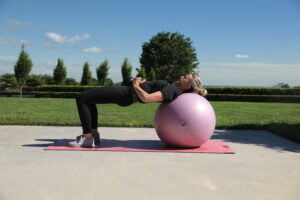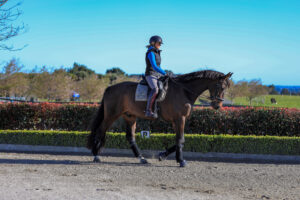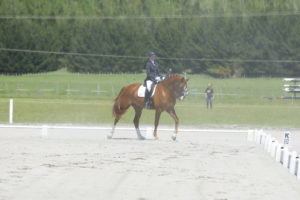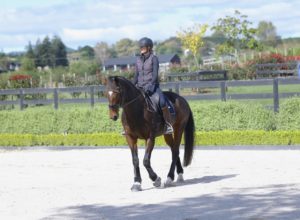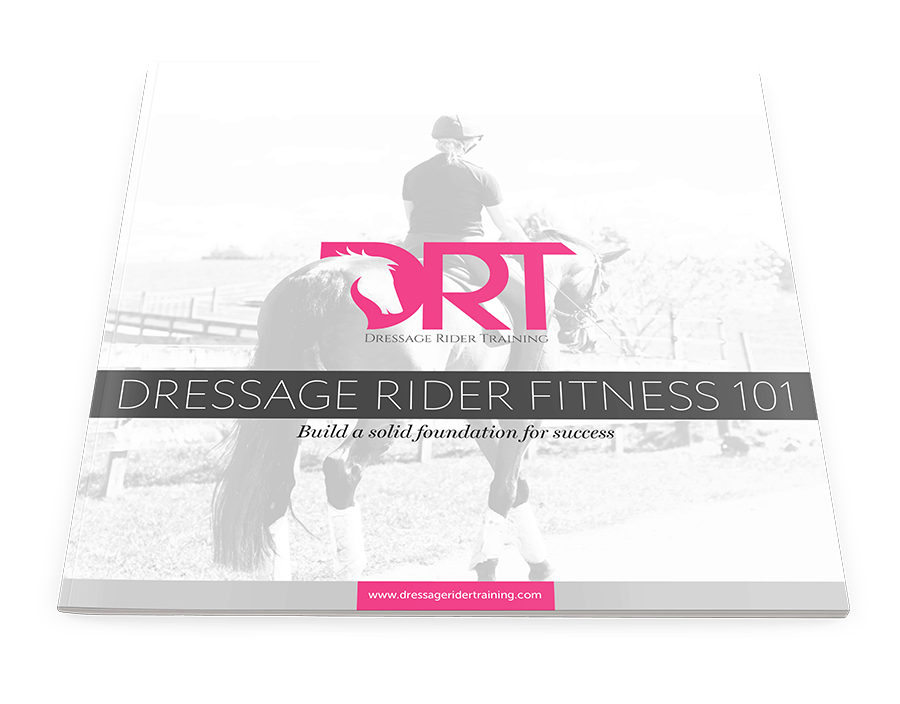Strength Building For Equestrians
Learn all about strength building for equestrians. Get workout ideas and discover the best sort of training to do as a rider.
Strength building for equestrians is often something that is underestimated; however, I am here to shed some light as to why this might be something you wish to add to your training to enhance your performance. In this article, we’ll go over some great exercises and tips for building strength as an equestrian.
Often when it comes to riding, many consider the actual riding to be better than heading to the gym. While I agree that I prefer my riding over most things, don’t throw away all workouts with just riding. There is a certain element of fitness that is required to be an easy passenger for your horse, I wrote an article here all about this and how you can improve your cardio fitness for riding too.
If you are wanting to improve your riding performance, then putting some time aside off your horse for your rider fitness will really pay off long term.
Should equestrians work out?
First and foremost, it’s important to understand why strength is crucial for equestrians. When you ride a horse, you’re not just sitting there passively. You need to be able to control the horse’s movements and respond quickly to any changes in direction or speed. Plus, you need to be able to maintain good posture and balance while doing all of this.
The strength element involved in improving your posture and general performance in the saddle is often overlooked when it comes to equestrians in general. It’s also an element that can often be feared in some circles because it’s believed to negatively impact the rider.
Often strength building for equestrians is associated with a stiff and braced body, and an image that comes to mind is of someone bouncing and or being aggressively ‘strong’ in the saddle and of course that is the last thing we want. Riding is all about lightness and moving with ease.
Often this bracing is in fact a reflection of weakness, with the wrong muscles overworking while the correct ones aren’t. By taking the time to improve your rider biomechanics off the horse, you learn how to use your body correctly and improve overall riding posture and performance in the saddle.

What muscles should I strengthen for horse riding?
Pinpointing just a few muscles is doing disservice to the amount of subtle work our body has to do while we ride, and I wrote an article here talking more about this.
Our pelvis plays a crucial role in riding and the muscles involved in stabilizing it are important to understand. An unstable pelvis can create an unstable ribcage and shoulder girdle, all of which then reflect your overall riding posture and position.
This is why strength building for equestrians can improve not just your pelvis position but your leg and upper body too.
Eight key muscles do equestrians riders use
Here is a breakdown of 8 of the key muscles involved in equestrians to create good core stability to stabilize the pelvis and hips. Stable pelvis is the foundation to which creates stable legs and stable torso and hand position.
- Transverse Abdominus
Our transverse abdominus helps stabilize between your hips, your ribs as well as your pelvis. It’s like the brace that wraps around your centre and protects your spine. Think of it like a corset around your middle. Its the muscle that comes on when you cough. I like to use the word brace and to imagine if I was to come and poke or punch you in the belly. You would brace your centre and switch your TVA (transverse abdominus). I wrote an entire article about your TVA here.
- Obliques
These are our turning muscles and imagine your hand sliding into your front pocket of your jeans, this is the direction of your obliques on each side. The obliques are vitally important for keeping ourselves evening stacked upon the horse. Often we may collapse through one side. Think of the obliques as the stiff guide ropes holding the sides of your body up evenly improving your lateral stability and control.
- Psoas
This attaches down the last thoracic vertebra as well as most of the lumbar vertebrae and discs between them from the inside and top of the femur. Its involved with flexing your hip and laterally rotating it. It also has a role in flexing your spine sideways, extending and rotating it. Its big role is the management of the pelvis and controlling the front to back motion. This has the power to restrict and or release the the riders ability to shock absorb the movement of the horse.
- Iliacus
Similar to the psoas the iliaccus has huge power in inhibiting or releasing the movement of the horse below the rider. The iliacus starts from the iliac fossa on the interior side of the hip bone. It joins the psoas major and the two can often be referred to as the iliopsoas. Together these muscles are often called hip flexors, however I like to separate them as they do have different roles.
- Piriformis
This attaches to the front of your sacrum and to the top of your femur. Together with the Psoas this muscle this helps rotate and extend your hips as well as internally rotate and flex. Because we are bipedal mammals (two legged) it can do the internal rotation one side and the complete opposite on the other side. Which is often highlighted when sitting in the saddle. For example if you have one thigh that adducts (moves inwards) easily, compared to the other this is highlighted once upon a horse and is going to create a uneven balance on the horses back. Very influential in the pelvic function and balance on the horse.
- Gluteus Maximus
This helps control the front to back balance of your hips, along side the psoas. When tight this can inhibit the horses balance and when weak this can affect the riders balance within the saddle. Its a large powerful hip extensor. The squeezing of the glutes encourages the thighs to activate which signals a breaking affect. This is great when you want to half halt and signal stopping, but not so great when sitting to the trot and trying to create freedom through the horses back. Theres an entire article on these strengthening exercises for these here.
- Quadratus Lumborum
This attaches to the bottom rib and to your lumbar vertebrae as well as the back of your pelvis (iliac crest). This has a major influence on how you move, stand and ride your horse. This is a lateral flexor which means it has the control of whether you tip or rock to one side in the saddle.
- Gluteus Medius
This muscle rotates the hip inward as well as abducts the hip outwards. It is crucial for helping the rider stay balanced in the centre of the saddle.
What strength training exercises are good for equestrians?
I often get asked if squats are good exercise for strength building for equestrians? The answer yes! Squats are great for building leg and core strength, which are important for equestrians. However, there are also loads more exercises you can do that can improve your riding.
Here are some exercises that can help:
Squats
Squats are great for building leg and core strength, which are both important for riding. To do a squat, stand with your feet shoulder-width apart and your toes pointing slightly outward. Keeping your chest up and your back straight, bend your knees and lower your hips down toward the ground. Then, push back up to standing.
Lunges
Lunges are another great exercise for building leg strength. Start by standing with your feet shoulder-width apart. Take a big step forward with one foot and lower your body down until your back knee is almost touching the ground. Then, push back up to standing and repeat on the other side.
Planks
Planks are a fantastic exercise for building core strength, which is essential for good posture and balance while riding. To do a plank, get into a push-up position with your arms straight and your hands shoulder-width apart. Hold this position for as long as you can, keeping your abs tight and your back straight.
Back extensions
Back extensions are great for strengthening your back muscles, which are crucial for maintaining good posture while riding. To do a back extension, lie face-down on the ground with your hands behind your head. Slowly lift your chest and shoulders off the ground, keeping your neck in a neutral position. Then, lower back down and repeat.
Squat jumps
Squat jumps are a more advanced exercise that can help build explosive leg strength. To do a squat jump, start in a squat position with your feet shoulder-width apart. Then, jump up explosively, pushing off the ground with your feet. Land softly back in the squat position and repeat.
As well as using strength training, there are a few other things you can do to improve your overall rider fitness .
Practice riding without stirrups
Riding without stirrups can help build leg strength and improve your balance and posture. Start by riding at a walk without stirrups, then gradually work up to trotting and cantering.
Use resistance bands for strength training
Resistance bands can be a great tool for building strength. You can use them for exercises like leg lifts and lateral leg raises to work your leg muscles, or for exercises like rows and pull-downs to work your back muscles.
Incorporate cardio into your routine
While strength training is important, cardio is also crucial for building endurance and stamina. Try to incorporate activities like running or cycling into your routine a few times a week to improve your overall fitness.
Practice yoga
Yoga can be a fantastic way to improve your strength and flexibility, both of which are important for riding. Here is a great beginners yoga routine you can start with today.
Strength as an equestrian is crucial for improving your riding abilities, and you can use plenty of exercises and tips to achieve this.
Remember that building strength takes time and consistency, so stay dedicated to your routine and you’ll see improvements in no time. Using strength training as an equestrian is not only beneficial for your position but also prevention of injury too.
Here are some more strength training workouts to help you out with all your equestrian endevours.
- Equestrian workouts to improve your riding fitness
- 6 Exercises To Improve Posture For Dressage
- 7 Simple Ways To Improve Your Core Strength For Dressage Riders
- The Corset Of Your Abdominals : Your TVA
- Dressage Rider Leg Strength & 6 Exercises To Help You Improve
- Dressage Rider Exercises For Improved Fitness
Want to learn more about dressage and how to get started, check out these articles
- What is the Dressage Pyramid of Training
- How to apply the dressage pyramid of training to your training at home
Dressage Horse training system
We have created our sister site Dressage Horse Training ,dedicated to helping you with all things ‘horse training’
Learn how to structure your weekly training and see it applied to various horses from young green broke, through to Grand Prix.
The secret to success is following a simple and proven system. So whether you are figuring out how to get started with dressage or a more advanced competitive rider, we cover everything you need to help you with your training at home. No matter where in the world you are based.
Learn how to master the art of dressage horse training, improve your dressage scores and make dressage easier to master.
To get started, check out these articles
Dressage Rider Training Program
Join other participants on our 12-week 'step-by-step' online rider
training program. Improve the 5 components of your riding.
Only available 3x per year.
see full details & register your interest
